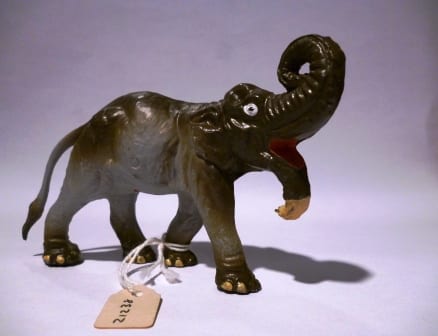My Favourite Specimen at the Grant Museum
By Mark Carnall, on 11 June 2012
I finally did it, I bit the bullet. You’d think that after [a number of undisclosed years] at the Grant Museum I’d have my answer for the regular question from visitors “What is your favourite specimen?” down to a fine art. But I didn’t. I’d cop out. I’d probably start with something along the lines of stating that as a museum, ethically we value each and every object in the museum equally. Nearer to the truth is that it is constantly changing from week to week. With 68,000+ objects in the museum there are a lot to choose from and more often than not the specimen I’d been documenting or researching that week would have an interesting story behind it or I’d discover something amazing about a group of animals I’d not known before. Well wait no longer because I’ve gone for a definitive, all-time, this-is-it favourite (for now at least) and the choice might surprise you…..
I was asked by colleagues from UCL Art History, who organised a series of workshops called Cultures of Preservation to write a piece about (one of) my favourite ‘preserved objects’ for the research network’s website and blog. The full article about my choice and the reasoning behind it can be found on the Preserved! blog here alongside the contributions from esteemed colleagues who work with preserved specimens in museums. The Deinotherium model above is one of a series of plastic models from various toy manufacturers that were donated to the museum and were used to teach Saturday school students about extinct animals. Now they are mostly in the store but they do come out every now and then for our rolling exhibition in the museum and across UCL.
You might think it an odd choice seeing as I’m surrounded by the ‘real’ remains of animals that were once live but for me these models enshrine all the things I love about zoology and the role of zoological museums in science and society. These models represent historical ideas, a lot of the constructions are out of date or were never really correct in the first place. They also represent obscure and bizarre animals and I do like to champion the underdogsdeinotherium. Lastly, these specimens are just one set of a suite of other models, casts, replicas and reconstructions that make their way into museums. Do they deserve a place in the museum at all? Are they more or less valuable than the ‘real’ specimens? Particularly bearing in mind that at one point our Blaschka glass models and embryological wax models would once have been considered as second-class specimens but they are now important in the history of science in their own right.
NEXT WEEK: My new new favourite specimen probably, depending on what I’ve been working on this week.
5 Responses to “My Favourite Specimen at the Grant Museum”
- 1
-
2
H Dominic W Stiles wrote on 13 June 2012:

hmmm… I am like you, I have no favourites really…unless I say the dog brain with the eyes still attached perhaps?!
-
3
amanda bush wrote on 14 June 2012:
As it is, my favourite occasional exhibit is wonderful Dr Joe Cain.
-
4
Emma-Louise Nicholls wrote on 20 June 2012:

Hope you’re coming to our film event tonight then Amanda!
-
5
Specimen of the Week: Week 156 (The Evolution of Life on Land) | UCL UCL Museums & Collections Blog wrote on 6 October 2014:

[…] Unfortunately, this Starlux model is the only Ichthyostega “specimen” we have in the Museum. It’s one of a hundred or so similar models of extinct organisms one of our predecessors saw fit to officially accession into the collection. It has a number and everything. [Curator Mark listed one of them as his Favourite Specimen in the Museum] […]
 Close
Close



Is there a Jar of Moles in the museum? That would be my favourite exhibit.
Amanda, Vietnam